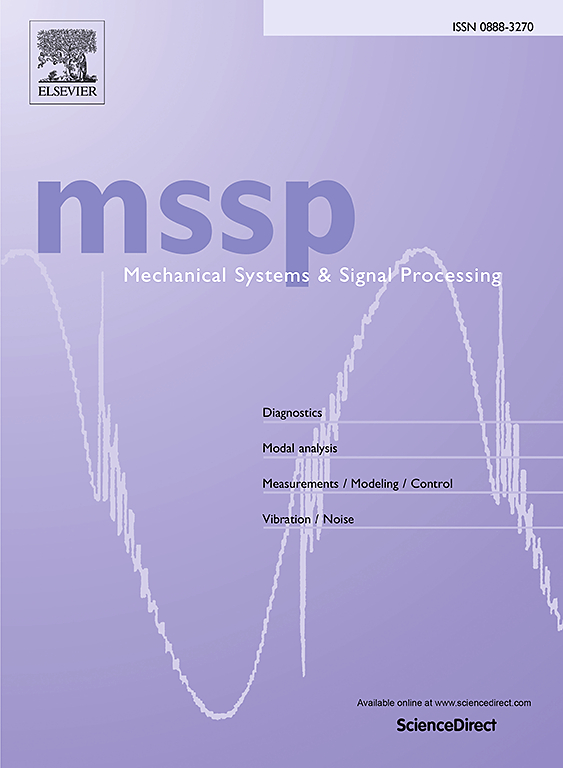Dynamic behavior and kinematic joint wear characteristics study of rigid-flexible hybrid mechanism considering spatial revolute joint clearance
IF 7.9
1区 工程技术
Q1 ENGINEERING, MECHANICAL
引用次数: 0
Abstract
As industrial production increasingly demands higher precision, performance and stability requirements for advanced mechanisms have intensified exponentially, making the investigation of their dynamic behaviors critically important. Among the predominant factors compromising the precision and robustness of mechanism actuators, elastic deformation of structural components and kinematic joint clearances have been identified as significant contributors. While current research on clearance-induced dynamic behaviors predominantly focuses on planar multi-link mechanisms or simple spatial parallel mechanisms. Studies addressing hybrid mechanism containing three-dimensional(3D) revolute joint clearances remain remarkably limited, and even fewer studies consider the flexible effects of components alongside the wear characteristics of kinematic joints clearance in such hybrid systems. To address these research gaps, this paper investigates the dynamic response, reliability and wear characteristics of kinematic joints in a 3-PRPaR-RUPUR spatial redundant rigid-flexible hybrid mechanism. Firstly, a 3D revolute joint clearance model is established. Next, a 3D two-node spatial beam element model is developed using the absolute nodal coordinate form(ANCF). Subsequently, a wear model for revolute joint clearances is given based on the Archard model. Finally, a dynamic model of the rigid-flexible hybrid mechanism, considering spatial revolute joint clearances, is formulated utilizing the Lagrange multiplier method. This investigation systematically quantifies the effects of component flexibility, clearance size, and multi-clearance configurations on the dynamic response, reliability of the moving platform and wear characteristics of clearance joints in the rigid-flexible hybrid mechanism. The findings aim to establish a systematic theoretical foundation for the study of high-precision, high-performance mechanism dynamics, reliability and the wear characteristics of kinematic joints with clearances.
考虑空间旋转关节间隙的刚柔混合机构动力学行为及运动关节磨损特性研究
随着工业生产对精度的要求越来越高,对先进机构的性能和稳定性要求也呈指数级增长,因此对其动态行为的研究至关重要。在影响机构执行器精度和鲁棒性的主要因素中,结构部件的弹性变形和运动关节间隙已被确定为重要的贡献者。而目前对间隙诱导动力学行为的研究主要集中在平面多连杆机构或简单的空间并联机构。针对包含三维(3D)旋转关节间隙的混合机构的研究仍然非常有限,甚至更少的研究考虑了这种混合系统中部件的柔性效应以及运动关节间隙的磨损特性。为了解决这些研究空白,本文研究了3-PRPaR-RUPUR空间冗余刚柔混合机构运动关节的动态响应、可靠性和磨损特性。首先,建立了三维旋转关节间隙模型;其次,采用绝对节点坐标形式(ANCF)建立三维双节点空间梁单元模型。随后,基于Archard模型给出了转动关节间隙的磨损模型。最后,利用拉格朗日乘子法建立了考虑空间转动关节间隙的刚柔混合机构动力学模型。本研究系统地量化了刚柔混合动力机构中构件柔性、间隙大小和多间隙配置对运动平台动态响应、可靠性和间隙接头磨损特性的影响。研究结果旨在为高精度、高性能机构动力学、可靠性和带间隙运动关节磨损特性的研究奠定系统的理论基础。
本文章由计算机程序翻译,如有差异,请以英文原文为准。
求助全文
约1分钟内获得全文
求助全文
来源期刊

Mechanical Systems and Signal Processing
工程技术-工程:机械
CiteScore
14.80
自引率
13.10%
发文量
1183
审稿时长
5.4 months
期刊介绍:
Journal Name: Mechanical Systems and Signal Processing (MSSP)
Interdisciplinary Focus:
Mechanical, Aerospace, and Civil Engineering
Purpose:Reporting scientific advancements of the highest quality
Arising from new techniques in sensing, instrumentation, signal processing, modelling, and control of dynamic systems
 求助内容:
求助内容: 应助结果提醒方式:
应助结果提醒方式:


